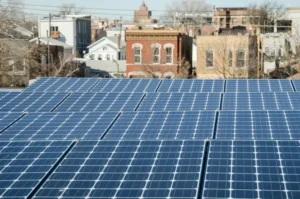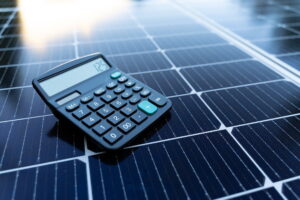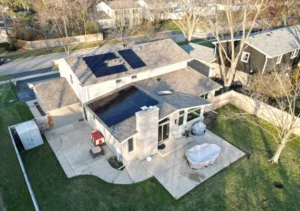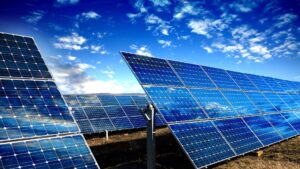So, the Game Is Rigged. Now What?
It’s a rotten feeling, isn’t it?
The moment you realize you’re paying for a service where the price is set in a rigged auction you can’t see. The moment you learn your money is being used to prop up “zombie” power plants that should have been retired years ago. The moment you see a headline about an 830% spike in energy costs and know, with absolute certainty, that the bill is coming straight to your kitchen table.
It’s the feeling of being a passenger in a car driven by someone you don’t trust, heading somewhere you don’t want to go. You have no hand on the wheel. No say in the destination.
You feel powerless. And why wouldn’t you? You can’t personally audit the PJM Interconnection. You can’t stop a new data center from plugging into the grid. You’re one person, paying one bill.
So what can you do when you’re stuck playing a game you can’t win?
You Don’t Fix the System. You Make It Irrelevant.
You don’t fight the machine. You unplug your cord.
You don’t try to win the rigged game. You pick up your chips and walk away from the table.
Wasting your energy trying to reform a multi-state, trillion-dollar system is a recipe for frustration. The real path to power isn’t in changing their rules; it’s in creating your own.
This is where we reframe the conversation about “going solar.”
This isn’t about being “green,” though it is that. It’s not a science fair project for your roof.
It is a strategic, financial decision to build a firewall between your family’s budget and a volatile system you cannot control. It’s a quiet declaration of independence from unpredictable rates and baffling charges.
It’s the moment you decide to stop renting your power from a broken market and start owning it yourself.
How to Fire PJM as Your Energy Supplier
So how does it work? How do you actually walk away from the table?
It’s simpler than you think.
When you install a solar system on your home, you are building a personal power plant on your roof. You are effectively firing PJM as the manager of your energy supply.
Your roof now generates the electricity—the commodity—that you used to be forced to buy from their volatile marketplace.
Those secret auctions? The backroom deals that prop up zombie plants? They don’t disappear. But they no longer have a direct line to your wallet. They become noise. A spectator sport you can watch with detached curiosity instead of financial dread.
Let’s be clear: ComEd still has a job to do.
The Restaurant vs. The Delivery Driver
Think of it like ordering dinner.
For years, you’ve been forced to order from one restaurant: The PJM Power Cafe. You don’t get to see the menu prices, the kitchen is a chaotic mess, and the final bill is always a surprise.
ComEd is the delivery driver. Their job is simply to bring the food from the restaurant to your door. They maintain the roads (the poles and wires), but they don’t cook the food or set the price of the meal.
When you go solar, you are not firing the delivery driver. You still need them.
You are building your own world-class kitchen in your backyard.
You are now the chef. You decide the menu. You control the costs. You’re cooking with free sunshine.
The delivery driver (ComEd) now has a new job. When your kitchen makes more food than you can eat on a sunny afternoon, they deliver it to your neighbors and give you a credit. When your kitchen is closed at night, they bring you a meal from your own pre-paid tab.
You’ve simply taken control of the most important part of the transaction: the kitchen itself. The menu and the price list are finally in your hands.
The Ghosts in Your Utility Bill
Let’s get tactical for a moment. Go grab your last ComEd bill. (I’ll wait.)
Got it? Look past the big, scary number at the top and scan the line items. You’ll see a whole cast of characters you never invited to the party.
There’s the “Supply” charge. This is the raw energy, the commodity bought in that PJM auction we talked about. This is the volatile part, the number that can swing wildly based on a heat wave in Philadelphia or a natural gas price spike in Ohio. This is the ghost of the rigged game, haunting your budget.
Then you have the “Delivery” charges. This is ComEd’s part of the bill. It includes a fixed “Customer Charge” just for the privilege of being their customer. But look closer. You’ll find things like “Transmission Service Charge.” That’s the toll you pay to move high-voltage power across the state—including to new, massive data centers that are putting an unprecedented strain on the grid. You’re essentially subsidizing their power-hungry business model.
And the real kicker? The “Capacity Charge.” This is the fee you pay not for energy you use, but for energy that might be needed on the hottest days of the year. It’s the money that keeps those inefficient, expensive “zombie” peaker plants on life support. You are paying insurance to a system that is fundamentally unreliable.
Each of these charges is a ghost. A phantom from a decision made in a boardroom you’ll never see, by people whose names you’ll never know.
When you generate your own power, the biggest ghost—the Supply charge—vanishes. It’s exorcised from your bill. The others shrink, because you’re using less of their services. You’re no longer paying for the sins of the entire system. You’re only responsible for your own corner of the world.
Your Roof. Your Power. Your Price.
Think about the feeling you get when you open your utility bill. That little knot in your stomach. Will it be a normal month, or is this the one where a price spike doubles the damage?
That feeling is a direct result of the system you’re renting from. It’s the price of volatility.
When you generate your own power, you make a trade.
You are trading the wild, unpredictable rollercoaster of a rigged market for the simple, predictable cost of your own system.
Imagine knowing, with near-perfect certainty, what a huge portion of your energy costs will be not just next month, but next decade. It’s like swapping a variable-rate credit card for a fixed-rate mortgage on your power.
The price PJM sets in its secret auction tomorrow? It doesn’t matter. The next “capacity charge” they dream up? Irrelevant.
You have one number. Your number. Locked in for the 25-year-plus lifespan of your system.
This isn’t just about saving money. It’s about reclaiming your peace of mind. It’s about financial certainty in a world that feels anything but.
Let’s Talk About the Fine Print (Because There’s Always Fine Print)
Okay. At this point, you might be thinking, “This all sounds great. A little too great. What’s the catch?”
It’s a fair question. You’ve been trained to look for the catch.
So let’s talk about the two biggest questions that are probably rattling around in your head right now:
- “What happens at night or on a cloudy day? Do the lights go out?”
This is where the system gets clever. Your relationship with ComEd doesn’t end; it transforms. They stop being your landlord and become your banker.
It’s called Net Metering.
Think of it like this: On a long, sunny summer afternoon, your roof-top power plant is producing more electricity than your home needs. That excess energy doesn’t just evaporate. It flows out onto the grid, and ComEd has to credit your account for every last kilowatt-hour. You are literally spinning your meter backward.
You’re making deposits into your energy bank account.
Then, at night, or on a dreary November day when the sun is on vacation, you draw that energy back from the grid. You make a withdrawal from your account.
At the end of the month, you only pay for the net difference. For many of our customers, that net difference over the course of a year is zero. Or even negative.
- “This sounds expensive. I can’t just write a check for a power plant.”
You’re right. And you don’t have to.
This is the most misunderstood part of the entire decision. You are already paying for a power plant. You’re just renting it, piece by piece, every single month, from a landlord who can raise the rent whenever they feel like it.
The goal of a solar financing plan isn’t to add a new bill to your life. It’s to replace your unpredictable utility bill with a predictable, fixed payment for an asset you own.
For most homeowners, the monthly payment on a solar loan is designed to be at or below what they were already paying ComEd. You’re simply redirecting your monthly energy budget away from a volatile rental market and into equity on your own roof.
So, is there a catch? The only “catch” is that you have to decide to stop playing their game and start playing yours.
What Does Your Escape Plan Look Like?
An escape plan isn’t a generic brochure. It’s a map drawn specifically for you.
It knows the exact pitch of your roof. It accounts for the shade from your neighbor’s oak tree. It understands your family’s unique energy habits. It has your name on it.
The idea of firing your utility is powerful. But the reality is in the numbers—your numbers.
We can’t give you those in a blog post. But we can give them to you in a 15-minute conversation.
This isn’t a sales pitch. It’s a strategy session. We’ll show you exactly what your personal power plant would look like, how much it would produce, and what your new, fixed energy costs would be.
No pressure. No nonsense.
Just the numbers you need to build your escape route from the broken game.




